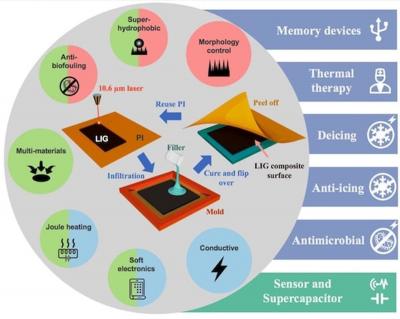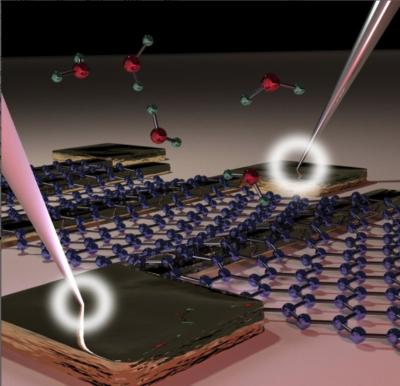
by MBF Admin | Feb 13, 2019 | 2D materials, Aerospace, AGM, Angstron Materials, Audio, Development, Electronics, Graphene applications, Graphene composites, Investment, Medicine, Products, Research, Rice University, Technical / Research
The labs of Rice University chemist James Tour and Christopher Arnusch, a professor at Ben-Gurion University of the Negev in Israel, introduced a batch of graphene-enhanced composites that can be a step towards more robust packages.By infusing laser-induced graphene...

by MBF Admin | Jan 31, 2019 | 2D materials, Aerospace, AGM, Angstron Materials, Audio, Development, Electronics, Graphene applications, Investment, Products, Research, Technical / Research
A team of European researchers from the KTH Royal Institute of Technology, Chalmers University of Technology and Uppsala University in Sweden, along with scientists from RWTH Aachen University and AMO GmbH in Germany, has discovered that when graphene is integrated...
by MBF Admin | Jan 23, 2019 | Development, Electronics, GNRs, Graphene applications, Investment, Products, Research, Technical / Research
Researchers have fully characterized graphene nanoribbons (GNRs) with a clear route towards upscaling the production. Two-dimensional sheets of graphene in the form of ribbons a few tens of nanometers across have unique properties that are highly interesting for use...
by MBF Admin | Jun 24, 2018 | Carbon Nanotubes, Development, Electronics, Graphene batteries, Graphene composites, Graphene production, Investment, Patents, Products, Research, Supercapacitors
First Graphene is collaborating with Flinders University to launch 2D Fluidics – a company that will aim to commercialize the Vortex Fluidic Device (VFD). 2D Fluidics is 50% owned by FGR and 50% by Flinders University’s newly named Flinders Institute for...
by MBF Admin | Jun 18, 2018 | Angstron Materials, Development, Electronics, Graphene applications, Graphene batteries, Graphene for Automotive, Graphene products, Investment, Products, Research, Technical / Research
Global Graphene Group (G3), the holding company of Angstron Materials and Nanotek Instruments, has announced G3-Fireshield Technology – a suite of next generation battery components to dramatically reduce the risk of fire occurrences in EVs, portable electronics, and...
by MBF Admin | Jun 18, 2018 | Development, Electronics, Graphene applications, Graphene batteries, Graphene Foam, Graphene Sensors, Investment, Medicine, Products, Research, Rice University, Supercapacitors, Technical / Research
Rice University scientists have developed a simple way to create conductive, 3D objects made of graphene foam. The resulting objects may offer new possibilities for energy storage and flexible electronic sensor applications, according to Rice chemist Prof. James...




